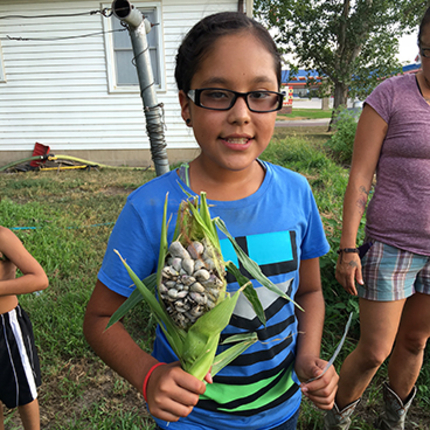By April Goettle, former staff member
Fall is the best time to plant alliums, a plant genus which includes garlic, shallots, chives, leeks and onions. These are some of my favorite vegetables, and are not only incredibly healthy, but impart flavor to any recipe.
This season, I planted two varieties of hardneck garlic, grey shallots (which are highly sought after by chefs) and Eqyptian walking onions. All can be grown from seed, but it is much easier to grow them from sets or cloves. Each clove of garlic grows a new plant with a full head of garlic. Shallot sets are immature shallots, and walking onions grow their sets on the top of the plant, then fall over or “walk” to propagate. The original walking onion bulbs can then be eaten.
Although all alliums can be planted in the spring, they produce better when planted in the fall. This is especially true for hardneck varieties of garlic.
Garlic is best planted after the first light frost, and several weeks before a hard frost. All other alliums have similar planting constraints, so we chose to plant them all at the same time on our acreage in Lyons, Neb., in late October.
Alliums like loose, nutrient rich soil, free of weeds. Follow these general steps:
- Pull already spent plants out of the garden beds (large plant stalks provide a place for pests to overwinter)
- Turn the soil with a fork
- After breaking up the larger clumps, work a fertilizer into the soil (at my place, we have an unending supply of composted horse manure)
- Allow for six to eight inches between plants
- Plant sets or cloves two inches deep
- Plant in rows, or alternately in a diamond pattern (more plants per square foot)
- Mulch around the plant areas with straw
I had some trees removed under a power line recently and ended up with a pile of mulch, which I used in between the rows to add nutrients back to the soil. Using two types of mulch is easier when planting in rows.
I will continue to water the beds while the weather is still fairly warm, cutting back as the temperatures drop. In the spring, be sure to keep all of your alliums weed-free, as they don’t handle competition well. You can double your bounty by also planting in the spring for fall harvest - I use so many shallots we barely get through summer.




